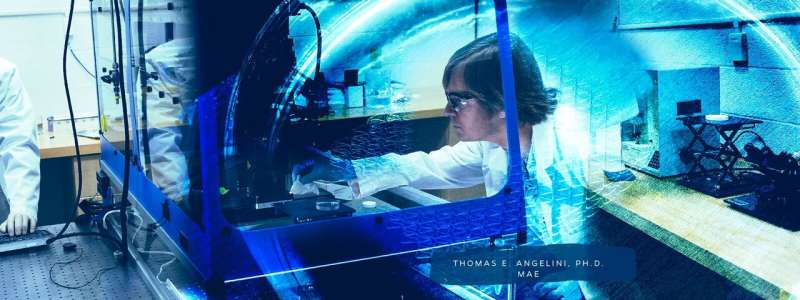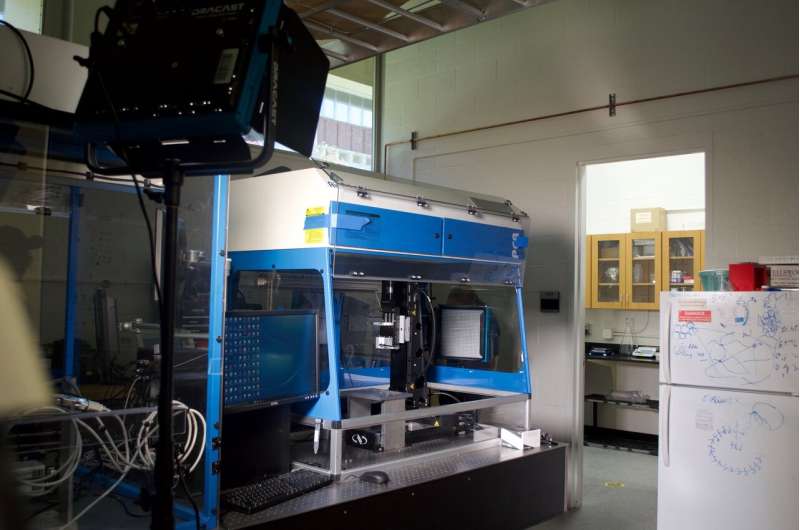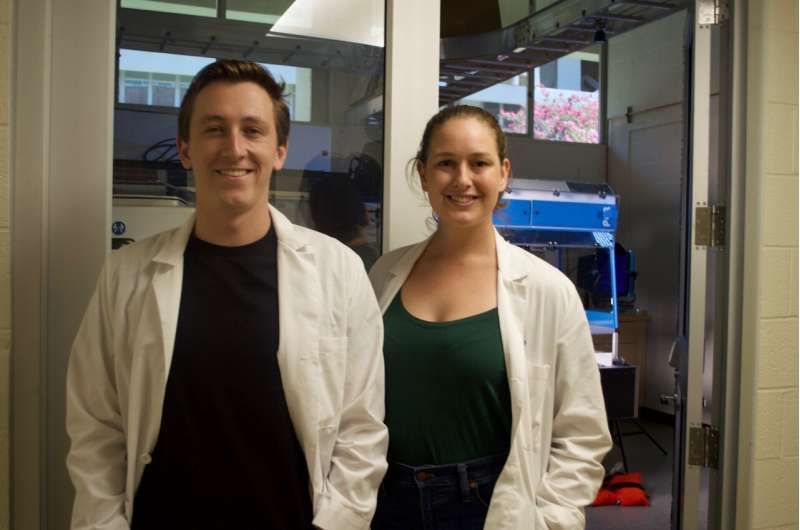Research team aims to reduce cost of drug development using 3-D-printed living tissues

Thomas E. Angelini, Ph.D., Associate Professor in the Department of Mechanical & Aerospace Engineering at the University of Florida and his research group, the Soft Matter Engineering lab have successfully fabricated living micro-beams from glioblastoma cells and extra-cellular material (ECM) embedded in a packed microgel support medium. They subsequently characterized the physical properties of the beams and compared their results against traditional mechanical engineering models. To their surprise, these microscopic, delicate structures behave a lot like the massive beams used in everyday building construction. "We were pleased and excited to see that our micro-beams, only 50 to 200 µm in diameter, acted in accordance with the mechanical principles for other models such as large steel beams," said S. Tori Ellison. Ellison is a Mechanical & Aerospace Engineering Ph.D. student who is mentored by Dr. Angelini and is the co-first author on the published paper that resulted from this research.
To systematically test the variables controlling cell-ECM micro-beam mechanics, the researchers varied cell density, ECM concentration, micro-beam diameter, and the surrounding medium's material properties. They found a cascade of cell-driven behaviors, including beam buckling, break-up, and axial contraction. By modifying classic mechanical theories, they uncovered basic principles of tissue micro-beam mechanics that can be generalized to cell types, ECMs, and bio-printing support materials. "These foundational principles can be extended to other shapes such as sheets and tubes, enabling a component-oriented future of mechanical design in tissue engineering and bio-fabrication in which stability and instability are programmed into the tissue maturation process," said Cameron Morley, co-first author. Morely is also a Mechanical & Aerospace Engineering Ph.D. student mentored by Dr. Angelini.
Their breakthrough finding, which has significant implications on 3-D bio-fabrication strategies and design of dynamic multicellular assemblies in regenerative medicine, as well as tissue engineering applications, is published in the July issue of Nature Communications.

The results of this research will be used in an exciting new project Dr. Angelini and his soft matter engineering team have just begun, which involves the development of advanced 3-D liver tissue models for drug development applications. "BioFabUSA, a Department of Defense funded Manufacturing U.S. Institute, run by The Advanced Regenerative Manufacturing Institute (ARMI), is funding the project."
According to the project proposal, the goal is to develop micro-tissues that can be used in commercial drug development applications. The objective of the research is to generate in vitro bio-fabricated liver micro-tissues of defined dimensions and cellular composition, which will have high levels of reproducibility in terms of metrology, cell function, and cell sensitivity to drugs and test compounds.
The proposal outlines three components:
- A new bio-fabrication and 3-D culture system that facilitates rapid, precise, high-resolution 3-D bio-printing of multiple components, micro-tissue monitoring and assaying, and micro-tissue maintenance through media exchange or passaging;
- Combinations of liver cells and extra cellular materials 3-D printed into numerous different microstructures that will be monitored for response criteria ; and
- Advanced automation and engineering solutions.
The project will be a close collaboration between UF and industry partners. Researchers on the project envision that their results will lead to new products, including packaged micro-tissues capable of being used to model human liver toxicity of pharmaceutical compounds in advanced drug development and testing.

This project will also produce the instrumentation, techniques, and assays needed to bio-manufacture small surrogates of a multitude of different types of tissue in the next phase of the research.
Dr. Angelini summed up his team's work, "The dedicated commitment of our laboratory to proving the sound foundations of our bio-fabrication 3-D culture system makes us a reliable partner of choice in this ground-breaking endeavor to bring effective medications and treatments to market in a safer, quicker, less costly manner."
"Engineering researchers are increasingly contributing directly in clinical translation research that could result in solid and immediate benefits that impact people and populations. What Dr. Angelini and his students did were exemplary of New Engineers who will transform the society of the future," concluded Dr. Forrest Masters, Associate Dean of Research for the Herbert Wertheim College of Engineering.
More information: Cameron D. Morley et al. Quantitative characterization of 3D bioprinted structural elements under cell generated forces, Nature Communications (2019). DOI: 10.1038/s41467-019-10919-1
Zev Gartner et al. Getting the measure of living biomaterials, Nature (2019). DOI: 10.1038/d41586-019-02263-7
Journal information: Nature Communications , Nature
Provided by University of Florida




















